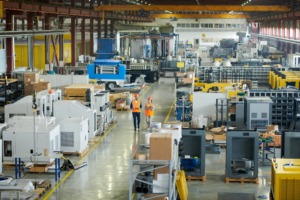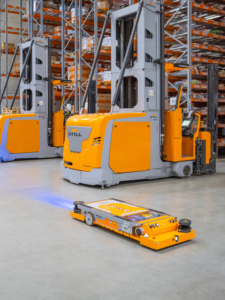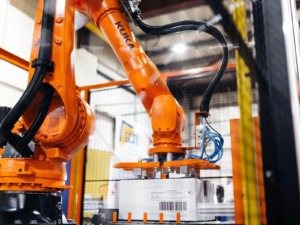The Future of Manufacturing: Emerging Trends in 2025
The manufacturing industry is transforming rapidly as technology advances and consumer expectations rise. To stay competitive, manufacturers must adapt quickly. In 2025 and beyond, companies worldwide will harness emerging trends that reshape production processes, supply chains, and business models.
Below, we explore the emerging trends already redefining the future of manufacturing.

End of Line Palletisers
These automated machines are used to stack and arrange products or goods onto pallets at the final stage of production. They are also used in areas such as car manufacturing to handle and accurately place heavy parts to enhance safety, precision and efficiency of manufacturing. They efficiently handle large volumes of products, automatically grouping and organising items into pre-set patterns before placing them onto pallets, making them a great asset for manufacturing operations.
By reducing manual labour and accelerating palletising, end-of-line palletisers dramatically improve operational efficiency. They deliver consistent, accurate pallet formation, minimising product damage. Manufacturers increasingly implement these machines to raise productivity, cut labour costs, and maintain a safe, organised, and streamlined end-of-line packaging process.
Autonomous Mobile Robots (AMR’s)
In car manufacturing, autonomous mobile robots (AMRs) transport goods across factories, warehouses, and distribution centres without human intervention. Equipped with sensors, cameras, and navigation systems, they move safely, avoid obstacles, and follow predefined paths with precision.
AMRs automate material transport, reduce manual labour, and speed up operations. Their flexibility allows them to adapt quickly to new layouts and workflows. By boosting productivity, reducing human error, and strengthening workplace safety, AMRs optimise material handling and streamline supply chain processes.
Automated Racking Systems
 Automated Racking Systems are advanced storage systems that use use robotic shuttles, conveyors, and stacker cranes to store and retrieve goods in high-density racking structures. They manage inventory with speed and precision, even in compact spaces, and reduce the risk of product damage, making them the true future of racking and operational efficiency.
Automated Racking Systems are advanced storage systems that use use robotic shuttles, conveyors, and stacker cranes to store and retrieve goods in high-density racking structures. They manage inventory with speed and precision, even in compact spaces, and reduce the risk of product damage, making them the true future of racking and operational efficiency.
As we look to the future of manufacturing and warehousing, it’s clear that innovative material handling technologies are shaping the way forward. These emerging trends are driving a shift toward smarter, more flexible, and sustainable manufacturing practices. As companies adopt these technologies, they’ll be better equipped to meet growing demands for customisation, speed, and quality. In fact, the future of material handling is already here. Many operations have already integrated these solutions to boost efficiency, cut costs, improve safety, and minimise errors.
UK Head office
Delaware Drive
Tongwell
Milton Keynes
MK15 8JH

Dawsongroup Limited | Company reg. no. 01902154 (registered in England and Wales)
